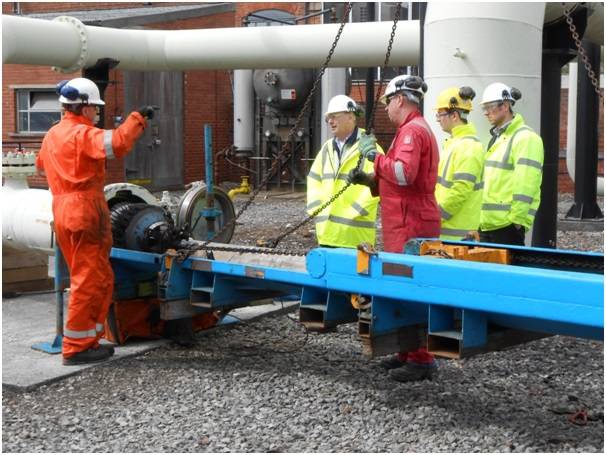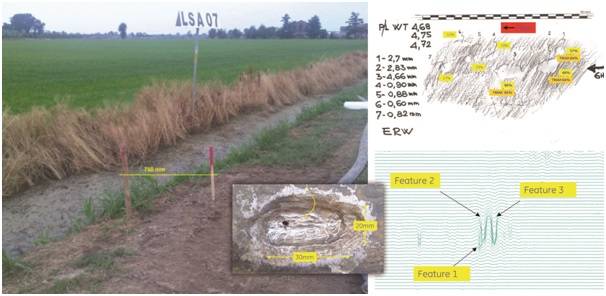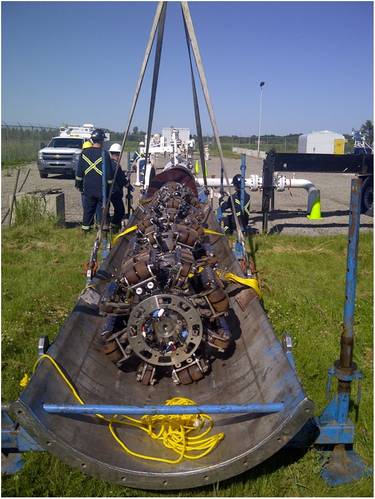O&G Pipeline Technology Evolution
Inline inspection technology for oil and gas pipelines has evolved and delivered highly complex and robust tools over the last 20 years. The levels of data accuracy available today would have been unachievable just five years ago. However, the rapid evolution of both technology and deployment techniques have only come about due to a drive for excellence within the industry.
Geoff Foreman, Growth and Strategy leader for PII Pipeline Solutions, discusses how advances in technology have been harnessed and developed to push the boundaries of what is possible in the realm of pipeline inspection. He goes on to explain how the innovative culture at PII Pipeline Solutions has driven improvements in key areas such as first run success rates and data accuracy.
The oil and gas industry’s reliance on its infrastructure and specifically its pipelines has always been a problem that materials scientists, engineers and plant operators have had to address. The importance of being able to identify, manage and repair corrosion, damage or other defects in pipelines while in service was clear by the 1960s and precipitated the development of the first ‘smart pig’. While comparatively low-tech compared with today’s standards, these first inline inspection (ILI) tools contained a series of instrumented modules that travelled through the pipeline recording corrosion pitting, dents, and other imperfections based either on ultrasonic wall thickness measurements or disturbances in an induced magnetic field.
Made a business imperative by pipeline operators’ need to maximize the safety and integrity of their assets, existing technology within the oil and gas industry was rapidly developed and the first specialist pipeline testing companies came into the market. Utilizing existing in-house research and development as the basis for their offering, this new wave of specialist organizations began to draw from the wider science and technology community to ensure that their technology was at the cutting edge of what was possible. The widespread availability of the microchip in the late 1970s provided the research teams with the opportunity to miniaturize their hardware and improve the capabilities and ease of deployment of a single ILI tool without the overheating issues that plagued valve or transistor-based systems.
PII Pipeline Solutions’ own lineage can be traced back to The British Gas On-Line Inspection Centre which set the tone for the level of investment and commitment required by opening a purpose-built facility in 1979 to support over 200 research staff. British Gas originally developed tools to allow in-service inspection of its own UK network, but this advanced technology being deployed in onshore pipelines in the UK, soon caught the interest of the oil and gas majors in the North Sea, and thus rapidly spread internationally as a result. A key element of the early success was having a robust science-based understanding of the many factors which affect magnetic performance in order to deliver the highest standard of magnetic flux leakage (MFL) inspection. By combining this knowledge with new techniques in computing, finite element and finite difference modeling, the team at Cramlington offered pipeline operators more information about their assets, with greater accuracy.
Perhaps paradoxically, the better the testing technology and techniques become, the more pipeline operators demand of ILI tools. However, technology must be suitably developed and fit for purpose before it is deployed in the field. Electro Magnetic Acoustic Transducer (EMAT) technology was first considered in the 1990s but early examples were not advanced enough for the special demands of the pipeline environment. In pipe steel, various ultrasonic reflections can be generated which can be difficult to interpret without the appropriate technology. PII addressed this challenge with the launch of an advanced system optimizing new sensor types that made substantial improvements to all aspects of the inspection performance, detection (sensitivity), sizing and discrimination (classification). In order to ensure a successful outcome, an extensive pull-through program was executed to confirm the Probability of Detection (POD), Probability of Identification (POI) and sizing performance prior to deployment.
While safety has always been the major driver, technology and the capabilities of ILI tools have evolved to address the changing requirements of both pipeline operators and regulators. The heightened recognition of environmental issues has led to a need to identify detecting small diameter pinholes in pipelines. While defects of this size are unlikely to lead to any structural issues, any escape of product into the surrounding environment is not acceptable.
PII Pipeline Solutions’ own fourth generation MagneScan and third generation EmatScan ILI tools recently reached their fifth anniversary of first deployment and provide an insight into what can be achieved through constant innovation.
MagneScan provides state of the art ILI technology for liquid and gas pipelines. With its comprehensive sensor array, the system combines several types of inspection in a single run, reducing any interruptions in pipeline service for the operator and overall inspection project costs. The tool is equipped with a high density three dimensional array of hall effect sensors for metal loss, a fully integrated high-resolution caliper, and Inertial Measurement Unit (IMU) for 3D pipeline mapping with all data sets aligned and synchronized. Data readings are taken every 2mm by all sensors with magnetic flux leakage measured on three separate axes. This new three-dimensional sensor configuration offers coverage of a line unlike other previous technology and optimizes the accuracy of defect sizing for width, length and depth, including the ability to detect and accurately size smaller defects previously excluded from contract specifications. By combining metal loss, caliper and mapping in a single inspection run, the new tool automatically increases data alignment speed and accuracy, dramatically improving defect location, direct assessment and remediation planning activities. Each dataset produced contains a comprehensive range of external and internal defect dimensions covering all Pipeline Operators’ Forum (POF) classification types. The thousands of multi-axis signals generated in every pull-through test are correlated with the known defect dimensions to generate signal/defect databases. These databases are then used to derive robust and more accurate High Resolution, Super High Resolution, and most recently Super High Resolution Plus sizing models capable of detecting and sizing even Pinhole features. All models and specifications have been extensively validated in-field and enhanced through customer dig verification programs. The longest run with the fourth generation MagneScan tool to date is an impressive 385km.
EmatScan CD has been developed as an ILI tool designed specifically for the unique demands of gas pipelines. It applies EMAT technology to detect and measure an extensive range of defects. The system can detect cracks as short as 1.97 inches (50 mm) and as shallow as .079 inches (2 mm) with discrimination of serious and non-serious flaws in a given pipeline. Unlike conventional ultrasonic inspection methods, the system does not require a liquid medium for its signals to reach a pipewall. As a result, operators no longer need to invest in costly pre-inspection preparation or subject their lines to contamination by foreign liquids as part of the inspection process. The system’s ability to detect even sub-critical Stress Corrosion Cracking (SCC) gives operators the advanced warning essential for the initiation of effective SCC management programs, without the high costs and loss of production associated with hydrostatic testing. Enhanced data accuracy allows for critical SCC and isolated cracks to be more effectively isolated and evaluated in order to priorities, and therefore minimize the amount of digging and repair activities, thus reducing the disruption to a given pipeline’s normal operation. EmatScan CD is the first ILI tool that gives gas pipeline operators the same crack detection benefits and confidence levels offered by their liquid pipeline counterparts.
Today’s cutting edge ILI tools have benefitted from constant evolution and improvement. They can now perform at twice the POI level, velocity and inspection range that would be expected 10 years ago, reducing the impact on pipeline operations. Data quality is also far less dependent on the internal surface conditions of the pipeline. ILI tools are now smaller, lighter and easier to manage with the capability to navigate and inspect tight bends and restrictions. Launch and recovery is also less complex without the need for expensive pipeline modifications and requires fewer technicians for the deployment. PII’s own ILI tools have been successfully deployed in on-shore and off-shore, seam welded, spiral welded and seamless pipelines containing condensate, CO2, crude oil, diesel, jet fuel, natural gas, naphtha, nitrogen, and water with a 94% first run success rate.
ILI is now a fundamental element of pipeline management and its success to date has been driven by the desire to innovate and apply cutting edge technology wherever possible. This has only been made possible by investment in research and development and by securing high quality engineers and scientists from a wide range of disciplines. New challenges will test the industry’s continued ability to innovate in order to ensure that the technology can perform consistently in the most challenging pipeline conditions.









